TriMet has just released the results of their Bikes on MAX survey that they launched in August of last year.
In the Executive Summary of the survey, TriMet points to the trends of growth in both MAX and bike ridership in Portland. They say those trends have, “resulted in an increasing number of bike-on-light rail trips” (I previously covered that issue in my story, TriMet grapples with bike capacity issues, from May 29th).
“To increase the number people accessing MAX light rail at the time of their choice, facilities or programs that would allow cycling at each end without needing to bring a standard size bike onboard are necessary.”
–from the Executive Summary
TriMet says this study was undertaken, “to gather data on when, where and why customers with bikes rode MAX light rail.” According to the documents released today, this data will now be used to develop a Bike Facilities Plan that will, “recommend specific ways to encourage and integrate bikes with transit while minimizing conflicts.”
In the “Recommendations” section of the survey’s Executive Summary, TriMet refers to allowing bikes on-board at all hours as a “lifeboat for cyclists — reassurance that they have a backup option in case of fatigue or mechanical issue.”
However, they list several factors (the main one being a lack of space) that prevent them from expanding existing space for bikes on trains. They also say that the design of the MAX light rail system limits the length and number of trains in service.
- The TriMet Bikes on MAX Survey:
- Executive Summary (35KB PDF)
- Complete Survey (1.12MB PDF)
- Bikes-on-MAX FAQs (15KB PDF)
TriMet’s analysis around this survey further validates that their focus is not on expanding bike access on the trains. Instead, they want to design their system so that people won’t need to bring a bike on board at all.
While they re-iterate that a blanket, rush-hour ban on bikes is not in the cards, they make it clear that “new alternatives need to be explored,” and that folding bikes “are a great option for both bus and MAX passengers.”
Aware that folding bikes will never make up a large percentage of bike riding passengers, the future for TriMet and bikes will be improved bike facilities at transit stops. They say this approach will, “encourage many more people to combine bikes and transit than could be accommodated onboard transit alone.”
TriMet seems to be looking to the future with hopes to emulate other countries with “mature bike and transit systems.” They specifically cite the Netherlands, where bikes are used as transport to the station for 33% of all rail transit trips (and only one in ten people bike from the station to their final destination).
TriMet may have a vision of a bike park-and-ride system, but will improved facilities alone be enough to encourage Portlanders to leave their bikes at the station?
According to their web survey (1173 responses, of which 568 came from BikePortland readers), 94% of riders take their bike on board and only 18% of current bike-MAX riders indicated that they would park their bike at their boarding station (if secure parking was available). In the on-board survey (425 responses) 76% said they needed their bike to reach their destination and would not be willing to use secure bike parking even if it existed. Further complicating the issue is that 38% of respondents said they would drive if they could not bring their bike on board.
Here are a few more interesting numbers from the survey:
- 2,100 passengers rode MAX light rail with a bike on weekdays during August 2007, accounting for 3.8% of all passengers.
- On the Yellow Line (Interstate), 14% of passengers from 4-6pm had a bike.
- One-quarter of all light rail vehicles intercepted at peak hours carried three bikes or more.
At the end of the Executive Summary are a list of “Planning Recommendations” and “Immediate Actions”. The recommendations are to:
- Develop and implement a Bike Facilities Plan that includes extensive short-term and long-term bike parking at stations, including facilities for customers that need a bike at each end of their trip.
- Consider bike transport impacts in future MAX light rail service improvements and develop tools for predicting or modeling future multimodal demand.
- Explore options to provide additional bike-on-bus capacity and bike-to-bus facilities
And the actions are to:
- Increase usage of existing bike lockers through more efficient management of the program and by relocating lockers to stations where usage is highest.
- Improve bike transport onboard MAX by making improvements to designated bike spaces, adding signage to specify that passengers allow cyclists to store their bikes in designated spaces, and make bike transport options in seating areas more flexible.
- Clarify customer information so that customers can better evaluate existing options including: how to transport bikes onboard, what kinds of conditions to expect, and bike parking. Partner with manufacturers and retailers to promote folding bikes.
- Make investments in bike parking where possible, given limited resources.
Colin Maher, TriMet’s bike programs intern will present the survey results to the Portland Bicycle Advisory Committee tonight.
— For more coverage of TriMet, browse the TriMet Archives.


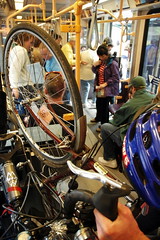
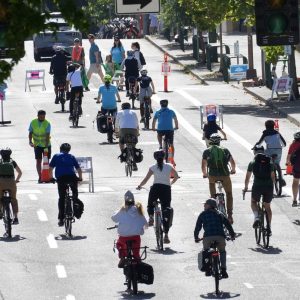
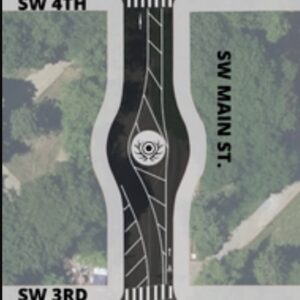
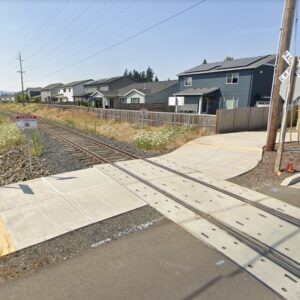
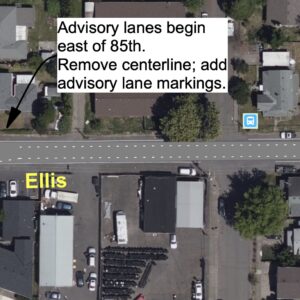
Thanks for reading.
BikePortland has served this community with independent community journalism since 2005. We rely on subscriptions from readers like you to survive. Your financial support is vital in keeping this valuable resource alive and well.
Please subscribe today to strengthen and expand our work.
How about a network of Bikestations?
(www.bikestation.org)
Tempe AZ and Washington DC will be opening up the next bikestations at a transit hub.
I\’m really glad to hear Trimet seems to be giving these issues serious consideration. Funny how huge seas of parking (like Gateway) are built along light rail stations, effectively cutting them off from easy foot access, while secure bike parking, a relatively inexpensive and unobtrusive measure, remains woefully inadequate. More secure bike parking at MAX stations is definitely needed. My wife has been on the wait-list for a bike locker at Orenco, and Quatama for close to a year now. I wonder what other people\’s experience has been?
I understand 200ft downtown blocks are a major constraint on the system, but it seems additional options for adding bike capacity to MAX should be considered, even if this means adding more frequent rush hour service and giving bikes second priority in the disabled seating area. After all, MAX and bikes are two key pieces of an overall alternative transportation network — if they can\’t work together I think it represents a big constraint on Portland\’s ability to build an equitable, sustainable transportation infrastucture.
Bridger:
I used to have a bike locker at PSU – it\’s my experience that the prime locations have high demand and most of the rest are pretty accessible. Maybe they need to put some effort into scaling up the popular places?
The thing that would be most valuable to me would be a way to know before hand which hooks (if any) are available?
Probably something that would be a bit expensive, but wouldn\’t it be cool if there were weight sensors on the hooks and next to the information that tells how quickly the train is coming, it also says which bike hooks are available.
I am curious what the percentage of cyclist with bikes on MAX use the MAX to get over, or rather under, the West Hills! It is my assumption that a lot of Beaverton/Hillsboro commuters might be using MAX for that purpose. I seem to see a lot of cyclist at the Goose Hollow stop heading West in the mornings and evenings.
Does anyone have a statistic?
Allison: You\’re right on the potential benefit on information on bike space on coming trains – it wouldn\’t really help trip planning, but it might help riders with bikes position themselves on the platform while waiting for the train.
To your other point though: PSU is a destination, not a MAX station (yet). And there\’s tons of bike parking there. The problem is when you use a bike to get to transit stop and there\’s not room for the bike you\’re likely late for work. Faced with this uncertainty people may just drive.
Weight hooks? Be realistic. Trimet needs to run more trains. My co-worker said there\’s been a noticable increase of ridership on Trimet since gas prices have been rising.
In Europe, it\’s common for people to have a second bike at the end of a train trip – how likely is it that we could talk people into that?
It seems unlikely, but it also seems like a semi-decent solution if the bike parking was secure enough.
toddistic:
We\’re reaching maximum possible trains – the Steel Bridge is a choke point reaching full capacity. There will be more trains when the Green line goes through, but that\’s about the limit.
Hey, it could be worse: NYC Mayor Mike Bloomberg would ban bikes on the subway if he had his way.
I don\’t think we are reaching the max possible trains. I don\’t see a train rolling through every 3 minutes.
I don\’t think we are reaching the max possible trains. I don\’t see a train rolling through every 3 minutes.
There are already capacity issues at the Rose Quarter. This mostly has to do with Yellow Line trains crossing the path of inbound Red/Blue/(Green) line trains.
http://portlandtransport.com/archives/2006/03/how_i_would_unt_1.html
Shift the thinking:
How about 1 full car dedicated to bikes. This would encourage MORE CYCLISTS, and more cyclists using Max and decrease overall congestion – a goal of Max.
Maybe two ceiling hooks for each bike with a higher ceiling? Lawyers probably wouldn\’t like passengers sitting under bikes though
Portland still needs to encourage cycling to reach any kind of Critical Mass.
(Don\’t see to many cyclists over here riding without helmets which is the case with 99% of copenhageners)
Trimet should:
A) redesign the train cars so that instead of having one bike hanger on each side, with a gap down the center for walking through, move the gap to one side of the train car and have room for 3 bikes to hang.
B) run trains more often – duh
C) stop suggesting that people only need a bike on one end of their trip. That only works in the Netherlands because they have much more compact cities and more extensive transit. Can you imagine biking to a station in Hillsboro and getting off *anywhere* else in Washington County and actually being close enough that you don\’t still need your bike?
Bridger (#2)
I completely agree with you and well said. Unfortunately not only are the blocks a constraint to longer trains, but the trains are already so close together that there is often a delay of one train which has to wait for the train ahead to leave the station (red line).
I wish we could have more trains or a bike-specific train, but unfortunately that\’s not realistic. What a shame they didn\’t think of putting in more bike parking and less car parking (or even running underground through downtown) before peak-oil.
I always think these studies on ridership are a little weird. If the facility is inadequate, it gets used less. You can\’t base your plans on current riders. Best case scenario for max – anyone can get from anywhere to anywhere without having to walk or wait a long time and without compromising safety and comfort. Same for bikes on the max – make it easy and convenient. If we build it, they will come! Seriously, lots of people would like to use max more but there is always an excuse for why it makes life too difficult.
If we make this investment now, in 20 years when cars are too expensive and/or dangerous to the environment (okay, that\’s now, but it will just get worse)we will be SO grateful.
I\’m glad TriMet is taking a serious interest in bikes. It\’s incredible the amount of money that is being considered for automobile park-and-ride stations along the new Portland-Milwaukie light rail (around 2,000 structured park-and-ride spaces altogether). Each structured parking space costs in excess of $40,000 and results in a little more than 2-3 additional rides per day. Instead of $80,000,000+ on park-and-rides, how about $80,000,000 on a superior bike parking and rental facility at each of the existing stations, plus all the new planned stations! Imagine, enough parking for 300-400 bikes in a secure environment, with keycard access, for a small maintenance fee of a few dollars per month. We\’d be talking about the ability to offer improved access to at least 10,000 new commuters on MAX per day (that\’s about as many new riders as the Portland-Milwaukie light rail is projected to serve in the year 2030 at a cost of $1.4 billion.
As for Rose Quarter capacity issues, the intersection needs to be closed to automobiles. Doing that will allow more trains to get through the intersection quicker. When the green line opens in a little more than a year, trains will be passing through rose quarter about every three minutes during the peak period, which is essentially the maximum with the current operations. A medium term fix can include a light rail turnaround downtown for westside trains at the end of Morrison/Yamhill to avoid capacity issues at Rose Quarter (although this requires transfers for some). A longer term fix can include an inner eastside north/south light rail that can allow Oregon City to Vancouver (the new, expanded yellow line) light rail access without needing to crawl through downtown.
That comment about bikes during afternoon rush hour on the yellow line is incredible. Makes me wonder what sort of bike stats we could get on the green line to Milwaukee in a couple years.
and to add to Jerry\’s idea, #13:
What if during Rush Hour there was a MAX that ran \”on the hour\” or something that had a car open entirely for bikes? This MAX could also have another MAX running 30 seconds ahead for non-biking transit users. A clever marketing strategy, an awareness effort to help bikers coordinate their efforts, and a plan that would virtually not affect peds at all. And to add to Allison\’s idea, perhaps the signage would let you know when a \”bikemax\” was coming so non-bikers could use the other car?
Not to hijack – but I would use max more if they didn\’t have 42 stops downtown within a block of one another and another 19 between the waterfront and Lloyd Center.
Living in Laurelhurst it takes me 45 minutes to get downtown on max, 15 to ride a bike. Am I really going to use this mode of transportation to get anywhere in the metro area?
Lamest.public.transit.ever.
Near the end of my TriMet stint, Eric and Colin asked for bike/MAX ideas. Along with a folding-bike rebate, I suggested that bike-friendly \”specials\” run from each end of the system to the edges of downtown–but not *through* downtown. That might add capacity without clogging the chokepoints at the Steel Bridge and the Rose Q.–and as #20 points out, bikes can be faster than MAX in downtown anyway. Haven\’t heard much about it, though.
Dear Jamie…\’lucky you live in Laurelhurst\’. Good planning. 😉
How about an audible announcement that tells people that they need to keep bike hook areas clear. I hate getting on the train and people looking at me because I have a bike and they are standing where I need to hang it.
It SHOULD be pretty simple, but that is not the case with the better part of most people. They fail to recognize the fact that they are not supposed to stand there.
Beyond that, I\’m starting a petition to eliminate \”Hotel Zones\” in bike lanes in downtown. I got pushed into traffic by a bell boy last night as he pulled out from behind 2 cars that were parked in the bike lane. He did not look, he just gunned it from the parking lane. I was glad the light was red as I was able to stop him and talk to him about his poor driving skills. I called the Hotel this morning and they told me that, \”I should be more careful\”.
FAIL
Too many folks are overthinking this issue. If I own a bike and need the bike on both ends of the MAX trip, why should I be forced to rent a bike, buy a folder, get a locker, keep a second bike in a second locker rental, etc. to utilize the light rail? Want to kill bike commuting? Make it expensive and a logistical headache.
Simple solution: Every other MAX train during rush hours features a rear car with NO SEATS. That leaves plenty of room for bikes, wheelchairs, strollers, and standing patrons. For rail riders of all types this means that you never wait more than 12 minutes or so for a bike train or one with a seat if that\’s your thing.
Just more open space is needed where we can stand and hold onto our bikes- forget the hooks…they don\’t fit the rims half the time anyway.
I\’m not sure how expensive it is to remodel the existing cars but, the current configuration is pretty bad. The bike/handicap area is configured with 2 bike spaces, 2 handicap spaces and 6 seats which can all be folded up to accomodate a wheelchair. See figure below (D=door, H=handicap, B=Bike, _ and | indicate seats)
D D
H H|
|
__ __
B B
D D
Why not strip out all the seats on one side and install 4-6 bike pegs/SRO area. On the other side, have a 6 seat bench that can be folded up to accomodate 2 wheelchair / stroller spots
D D
B |
B H|
B |
|
B H|
B |
D D
All the dividers and perpendicular seats are horribly inefficient uses of space.
So, it stripped out the spaces in my post above. Damn technology!
Trimet – nice research and report!
I would not park and ride my bike, and I think it sends the wrong message to bike commuters to encourage this as the most appealing option. YTransit becomes a lot less flexible (for me at least) if I couldn\’t ring my bike on board. I had the same thougt as Jerry – one car for cyclists (though non cyclists could ride it as well) during peak bike riding times. This might lessen some of the conflicts.
Maybe we can hand off our bikes to the handicapped.
I understand this is a bike forum so I would expect the majority of comments to focus on how to make the MAX system better/more convenient for bikers but I think the majority of commenters have a vary biased opinion that is not based on fairness. I commute in to work by bus and sometimes by bus and MAX, every day. I know people are coming and going from various places, at all different hours but I have to believe the primary commuter is coming from somewhere outside of the downtown core (including close in NE/SE), into the downtown core. If this is true, I think expecting folks to lock and leave their bikes at an outlying MAX station and then pick them up on their way home is fair for the most part. Obviously Trimet would need to invest in this area to allow folks to do this.
I also think it is completely unreasonable to expect anything like a “bike only” train. Not only are there many times more pedestrians on the trains than bike riders, why should a bike rider be considered a more privileged class? I think there is a big misperception among bike riders that everyone who rides the MAX lives within walking distance (i.e. they only ride because it is convenient for them). In truth, a ton of MAX riders first take a bus to get to the MAX train (which is little different then riding a bike to the MAX stop in terms of “doing the right think”) and they are just as entitled to a spot on the train as someone with a bike. I also see far too many bike riders on MAX (and on buses) get on for a very short, walkable/bike rideable distance which makes me wonder, why not just ride the bike? Is it just a status symbol for some people? I bet there are not that many bikers who ride the MAX that do not also live within walking distance of the MAX and or a bus that connects to the MAX. Riding their bike, and putting it on the train, then becomes a choice. I also think the comments about just driving in to work if putting ones bike on the MAX isn’t convenient enough is a rather privileged way to think. Again, a ton of people who ride the MAX and buses do so because that is all they can afford to do (maybe they have a car, or share one with a spouse, but can’t afford to pay for parking).
As some others have noted, part of the problem is that MAX is so slow and zig-zag-y going through downtown Portland, and the Yellow Line isn\’t the most efficient either. See http://www.jasonmchuff.net/TriMet/pmall.htm and http://www.jasonmchuff.net/TriMet/imax.htm
If you look at the case study in Appendix A on page 41 of the survey, even without considering waiting time it\’s 7 minutes faster to bike through downtown to Goose Hollow than to take MAX.
While it is true that a bike is faster on the other end in that scenario (though it seems like you could line up the transfer to the bus better so there\’s less waiting time), a faster trip through downtown would make that extra time more palatable.
I try to avoid taking my bike on MAX; it means I take up twice the space of other riders.
I have one of the few lockers at the Rose Quarter…there is the problem; not enough lockers at the right places.
I wonder how many of us have two bikes. I do. Having one at each end of my commute would not be that much troule, if there are lockers.
#32 – It doesn\’t have to be a \’bike only\’ car, but it would be a better use of space if there was at least one car that didn\’t have seats. This could accomodate more people and bikes.
Personally, I don\’t ride Trimet anyway because it\’s faster to just ride my bike and I don\’t have to ride over the west hills.
A car with no seats could also better accommodate those strollers the size of Sherman tanks that people insist on bringing on MAX.
Donna (#36): But then the people who bring their urban assault strollers on MAX would whine about not having anywhere to sit, and how it\’s discrimination!
It\’s nice to think — especially on this forum — of Trimet dedicating 50% (or even 25%) of rush capacity to bikes and bike-friendly transportation, but their own survey says bikes are but 4% of ridership. Proportionally, that makes the current arrangements about right.
That said, I can\’t afford two bikes, one at each end of the MAX part of my commute. Even if I could, I usually ride by bike + MAX to work (so I\’m at least less sweaty) then bike all the way home at night because it\’s a nice ride and a good workout. I don\’t think that\’s an unusual commute pattern, and nothing Trimet has proposed would address the needs of those people.
Isn\’t it weird that Trimet did this survey and found out that the majority of bike-commuting respondents feel that bike lockers/bike parking/two bikes was not a viable option for them, and that they would vastly prefer having safer/more convenient/more options to take their bikes onboard MAX, then they announce their solutions and its all about bike lockers?
Bike lockers aren\’t a bad idea, but something\’s got to give in terms of giving people a place to store their bikes on the trains (especially for the days when it starts raining mid-day).
What about moving some seats? What about an announcement saying that bikes are allowed on trains (even when the hooks are full). The comments section here is already a gold mine of ideas.
Folding-bike discounts? Bike parking? Good ideas, but only in conjunction with better bike access, not as a deterrent to multi-modal bike commuters!
How about just more bike racks (staples) at each MAX stop and transit station? We could have mini-parking areas like we have on Belmont and Mississippi.
Then you just ride a crappy bike and lock it up there with an uber lock. Combined with security cameras, it should help keep theft down.
Just an idea.
While I realize that this is a bike centric blog, shouldn\’t MAX riders have priority over bicycles? I\’ve been on some rush hour trains where there are three or four people standing in the bike hook area. If a bicyclist enters, they have to push these people into an already incredibly packed standing area, not to mention to awkward displacement of riders while they hang their bike. Sometimes these trains are so full that they\’ll pull up to stations, packed with people and bikes and there\’s no way for new riders to enter the train. If a train is so full that standing passengers cannot enter, I say pull the bikes off.
Why does any of this have to be an issue? why are we pointing fingers and deciding who is the more priviledged rider?? Evry single one of us has the right to be on board that train and before you turn and judge someone on whether or not they should be or not, perhaps you should remember that YOU have NO IDEA what may be going on in their life. Whle they very well may be resorting to laziness, they may also be going through some hardship that we know nothing of. Just share. SMILE! and freaking share. Don’t smile,who cares!but why try an make another person miserable just because you are?